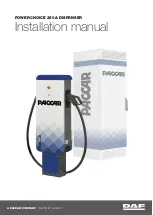
WWW.MANUALS.WS
WWW.MANUALS.WS
1977 Volvo 242 244 245
12 Right parking and side marker lights, Instrument and panel lights, Seat belt light, Ash tray
light, Shift positions light
8A
pg. 65 Wheels and tires
General
The car is equipped with pressed steel wheels.
If possible, the wheels should always be used on the same side throughout their lifetime. This is
particularly important for studded winter tires, otherwise the studs may loosen and come off.
Snow tires
Studded snow tires should also have a running-in period of between 300-600 miles (500-1,000 km).
During this period try to avoid driving hard round bends and at high speeds, also hard braking and
acceleration.
Radial type tires, with or without studs are recommended for winter use.
Tire chains can be used on the rear wheels only providing that the chains are finelinked and do not
project so much from the tire that they can rub against the brake caliper or other components.
Strap-on emergency chains must not be used since the space between the brake calipers and the
wheel rims does not allow sufficient clearance.
Check tire wear pattern
Check the tires at regular intervals for damage and abnormal wear, also for particles which can become
imbedded in the tread. Have them balanced if necessary. Poorly balanced wheels will rapidly increase
the wear on the tires and affect riding comfort.
To observe when replacing wheels
To avoid re-balancing, mark and re-install wheels in the same location and same position as before
removal.
Tire wear indicator
The tires have a so-called "wear indicator" in the form of a number of narrow strips running across or
parallel to the tread. When approx. 1/16" (1.5 mm) is left on the tread, these strips show up and warn the
car owner that the tire should be replaced.
Check tire pressure
Check the tire inflation pressure regularly when refueling. See
for the correct tire pressure.
When driving, the tire temperature and pressure rises in relation to the speed of the vehicle and its load.
Normally the pressure should only be checked when the tires are cold. When the tires are warm, a
change in pressure should take place only when air must be added into the tires.
Excessively low tire pressure is one of the most common reasons for tire wear. Tires which are
file:///K|/ownersdocs/1977/1977_242_244_245/77242244245_03b.htm (11 of 14)12/22/2006 10:07:34 PM
















































